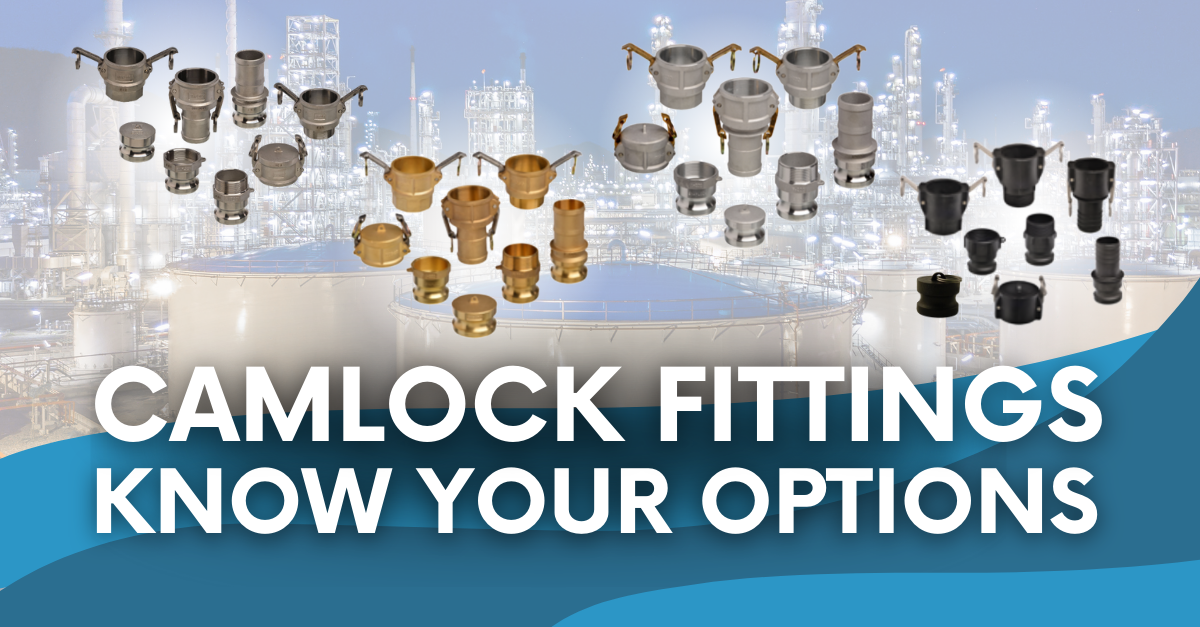Choosing the Right Material for Camlock Fittings
Camlock fittings are an essential component in fluid transfer systems across various industries, from chemical processing to food and beverage manufacturing. Selecting the right material for your camlock fittings is crucial for ensuring durability, efficiency, and cost-effectiveness. In this guide, we explore the benefits and limitations of the most common materials used for camlock fittings:
- Stainless Steel
- Aluminum
- Brass
- Polypropylene
Stainless Steel Camlock Fittings
Corrosion Resistance:
Ideal for harsh environments, including marine, chemical, and food processing industries.
Durability:
Withstands high pressure and temperature variations, offering long service life.
Hygienic:
Preferred for food, pharmaceutical, and beverage industries due to its non-reactive surface.
Weight:
Heavier than other options, which may impact ease of handling and transportation.
Best for:
Higher pressure (up to 18 Bar) unvalved applications, food and beverage processing, marine and chemical industries.
Aluminum Camlock Fittings
Lightweight:
Makes manual handling easier than higher weight alternatives.
Cost:
More affordable than stainless steel while offering good strength and durability.
Extreme Conditions:
Less resistant to harsh chemicals and high temperatures.
Oxidation:
May develop surface oxidation over time, which can impact longevity.
Thread Galling:
Higher potential for the threads to seize or lock together.
Best for:
General industrial use, water applications, fuel handling, and non-corrosive chemical transfers.
Brass Camlock Fittings
Corrosion Resistance:
Performs well in marine and industrial environments.
Reduced Spark Risk:
Mitigating ignition sources, brass is non-sparking helping implement proper safety procedures.
Chemical Resistance:
Not suitable for highly acidic or alkaline fluids.
Best for:
Marine applications, petroleum handling, and fuel transfer systems.
Polypropylene Camlock Fittings
Chemical Resistance:
Excellent for handling corrosive chemicals and acids.
Lightweight:
Significantly lighter than metallic alternatives, making manual handling easier.
Cost:
The most affordable material out of all the options.
Non-Conductive:
Ideal for applications where conductivity is a concern.
Pressure & Temperature Tolerance:
Not suitable for higher pressure or higher temperature applications.
Durability:
More prone to cracking and wear over time, especially in physically demanding environments.
Best for:
Agricultural use, chemical processing, and lower pressure fluid transfer.
Choosing the Best Camlock Fitting Material for Your Needs
The right camlock fitting material depends on your specific application.
Remember S.T.A.M.P – which means:
- Size
- Temperature
- Application
- Material
- Pressure
Consider each of these points when choosing which material of camlock fitting is best for your application.
At Action Sealtite, we offer a wide range of camlock fittings in stainless steel, aluminum, brass, and polypropylene, Including a locking camlock fitting range called Saflok in 316 stainless steel.





